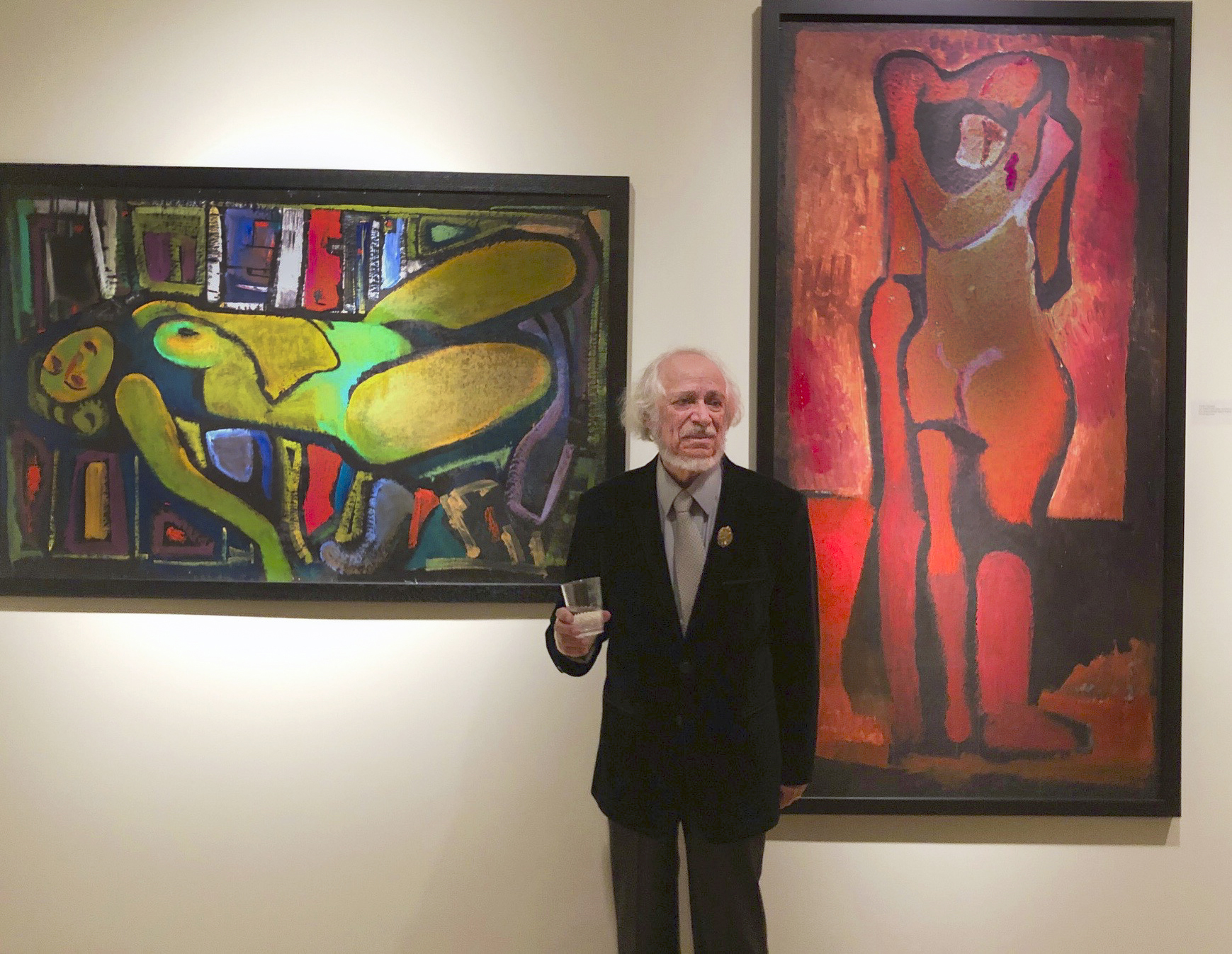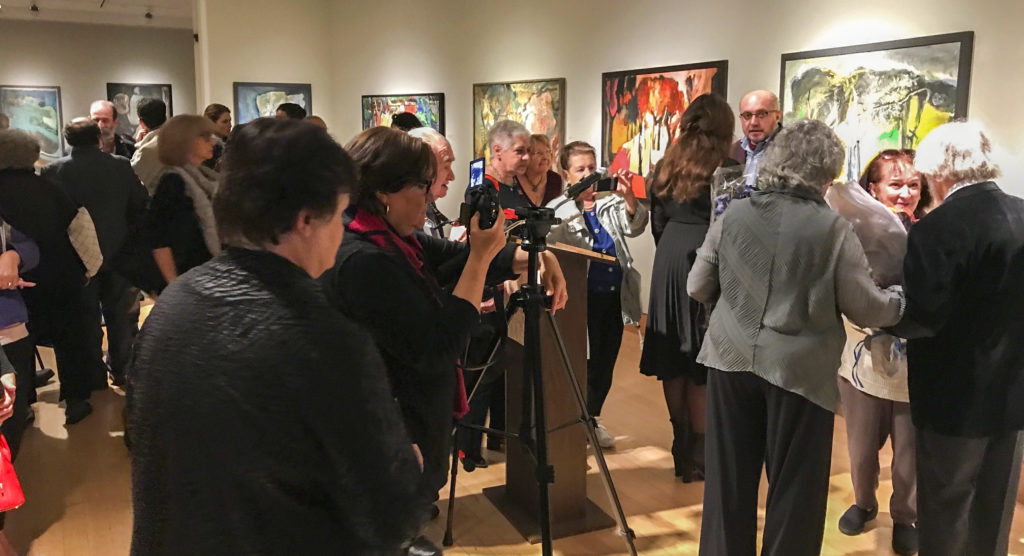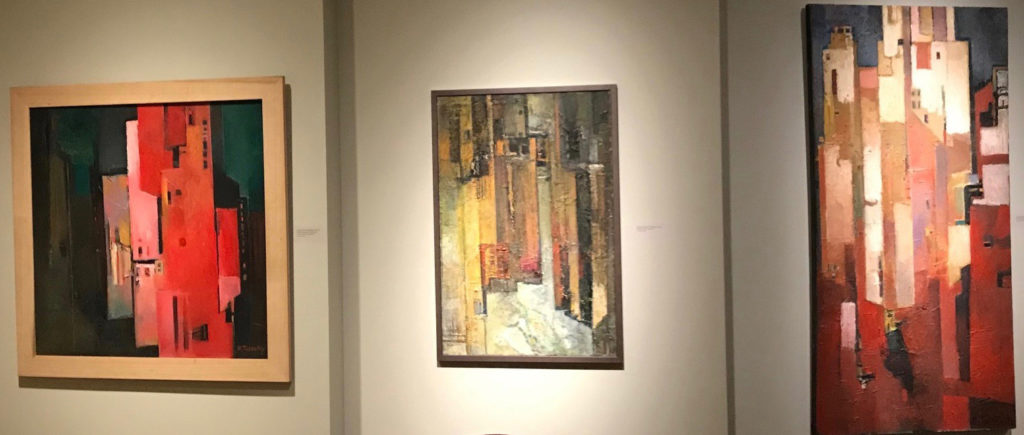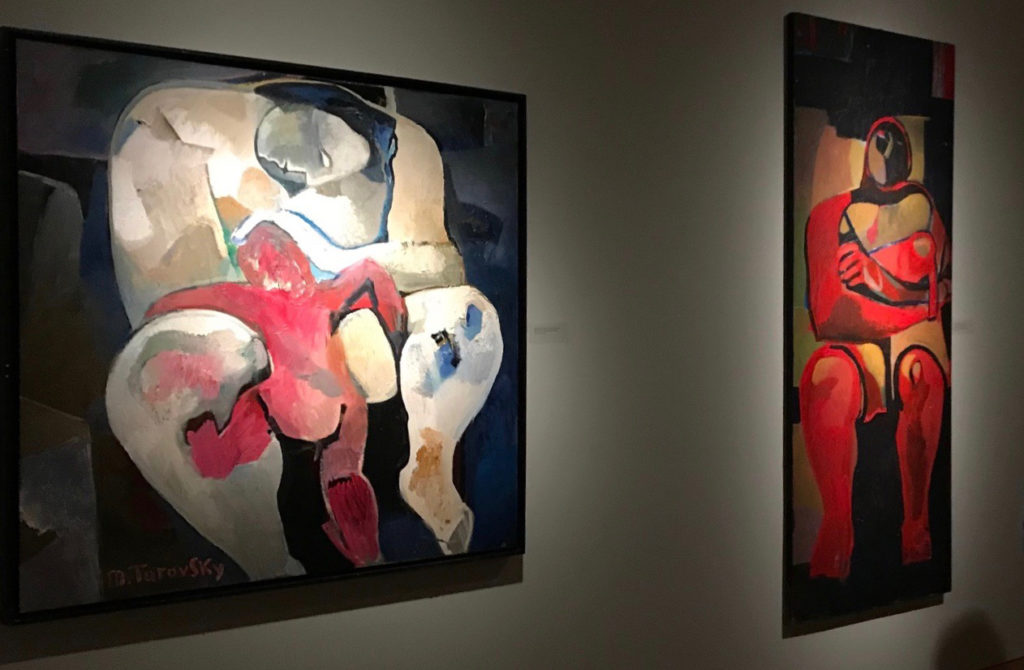Anna Kaluger
English translation by Ulya Aligulova
About the opening of the exhibition, its central ideas and images, and about the artist, in whom modernism has found its ally.
On October 27th, an opening took place at the Ukrainian Museum in New York of a major retrospective titled “From Darkness to Light” of one of the most distinguished artists of Ukrainian contemporary art in the USA – Mikhail Turovsky. The guest curator was the famous Ukrainian poet and writer Vasyl Makhno.
Contemporary art events are rarely met by rousing ovation, partly due to the new “politics of response” – a trend of ironic detachment from all artform, partly because it’s no longer a necessary part of spectator culture.
Contemporary exhibitions also rarely receive wild applause, especially in New York, spoiled by its sheer number of events. In the case of “From Darkness to Light”, however, the audience gave Turovsky a standing ovation, which by no means was by virtue of the diaspora crowd of the Ukrainian Museum – a comforting and benevolent circle of friends where everyone knows one another and every response is nothing but positive. This circle of “friends” of Turovsky goes well beyond the scope of the diaspora, as it’s been built through numerous exhibitions on some of the most prominent American and European platforms: from the Vienna Biennale and Palais de Congres in Paris to the UN headquarters and the Art Expo in New York. Those weren’t expected ovations from a “benevolent” crowd, but rather an expression of gratitude for being so blessed to consider one of the most celebrated masters of contemporary figurative art part of the Ukrainian art.
The exhibition presents around 80 works: the triptych “Crematorium” from his art epic “Holocaust”, paintings dedicated to Holodomor, urban landscapes of New York, and the first-time exhibit of “Motherhood”, a series of graphic illustrations for Stefanyk and Lesya Ukrainka with Madonna-Mavka. Turovsky has become somewhat of a symbol of Ukrainian fine art in the USA, but at the same time, is by no means confined by his belonging to the Ukrainian culture.
His works, influenced by the Ukrainian school of Vassily Kasiyan and Tatyana Yablonskaya and irrespective of rapidly changing directions in art in the States, reveal a truly unique experience of existence at the intersection of two opposing cultural identities – the soviet and the western. Nevertheless, Turovsky didn’t become a “product” of this conflict, instead taking in the best that these cultures had to offer, and, at the time of their decline, putting forward his paintings of the triumph of life.
His treatment of the themes of Holodomor and Holocaust lie at the intersection of the biggest political ideologies of the 20th century – communism and nationalism, which became two hotspots of Turovsky’s art and manifested in the series “Holocaust” and “The end of a great utopia”. He demonstrates the ability to “look at the past without averting the gaze”, to depict History with a capital letter instead of focusing on endlessly interchanging art styles, to clear-headedly gauge and assess the scope of the disasters of the past by way of which a new future is created where these calamities are no longer possible and life on earth continues: “і буде син, і буде мати, і будуть люде на землі”.
Because when the world is subjected to severe challenges the only voice capable of putting it in order is that of an artist. An artist declares a manifesto one after another in hopes that his vision of life will become shared by all. Through his works Turovsky offers a world full of humanitarianism, in which even the trials of the biggest tragedies of the 20th century, the Holocaust and the Holodomor, are inevitably trials of humanness. The space of the museum succeeded at highlighting the contrast of his works, displaying the coexistence of the black-and-white paintings of the Holocaust and Holodomor with the colorful blooming of the “Sunflowers” series.
To be able to see a tragedy this way – through unimaginable darkness but without losing hope, one requires a great deal of courage – artistic courage above all, since among the numerous truths the one that always remains real is the truth of life dedicated to art.








